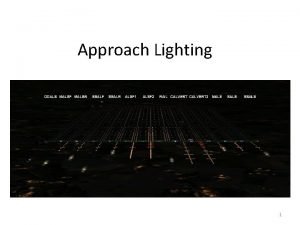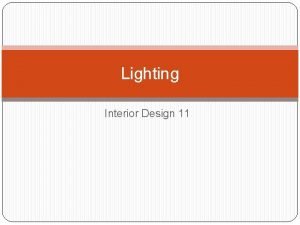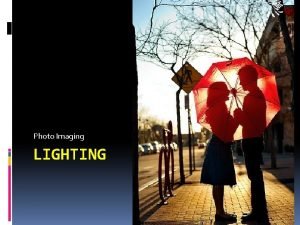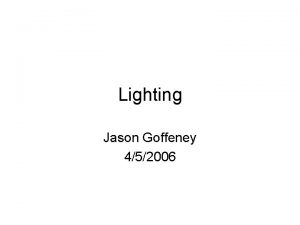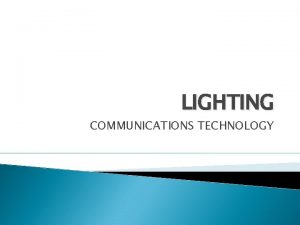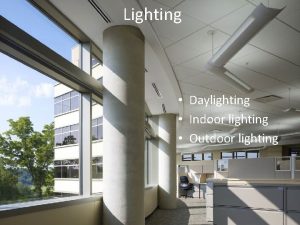Lighting systems in schools Good quality lighting is








- Slides: 8

Lighting systems in schools

Good quality lighting is important to help pupils learn, especially those with special educational needs (SEN) and/or any disability. Natural lighting with additional artificial light should be used where necessary, avoiding glare and revealing good visual contrast and colour rendering. Light levels should be adequate on the working plane and for people to clearly see the teacher’s face, the whiteboard and computers without creating reflections, shadows and harsh contrasts. For an even better effect, light sources should not be visible, flicker should be avoided and uplighters should be used.

However, there are relevant design issues that should be considered for all schools: - The colour rendering of the light source and the extent of contrast are particularly important. Some visual impairments involve a degree of colour blindness and it is important that contrast of tone as well as colour should be produced on the objects illuminated. - Careful use of colour can help pupils recognise and identify objects. For instance, using a darker colour for a door frame (contrasting with door leaf and wall) will help in locating the door. A handle that clearly contrasts with the surface of the door and is non-reflective will also make it easier to distinguish.

- Students with visual impairment often require higher than normal levels of illuminance. It is not necessary to install this as a feature of the primary lighting system but provision should be available for supplementary task lighting. Emergency lighting must provide sufficient illumination in the event of a failure of the normal electric lighting supply, so that the building can be evacuated quickly and safely. There are considerable benefits in integrating the general and emergency installations. Some luminaires can incorporate emergency lighting as well as normal lighting. Standard fittings can be modified to integrate an emergency facility. Emergency lighting in schools should be provided on:

• Escape routes • Escape stairways • Corridors without any windows • Areas with dangerous machinery • Areas accessible to the public during the evenings. These include halls and other spaces used for performances. In areas used by the public during the hours of darkness, the emergency lighting should be of the maintained type, meaning that the lamps contained in a luminaire will operate from the normal supply or from the emergency supply at all times. Where part of the premises is licensed, additional provision may be required and it will be necessary to seek the advice of the local authority.

Examples of lighting:

The project is realized with the finance support of the European Commission within the "Longlife learning program". The presentation was made as a result of the Leonardo da Vinci project titled "Your future career prospects" carried out in "Zespół Szkół Zawodowych" no 3 in Katowice between 2011 and 2013. The publication reflects the standpoint of the authors only and neither the European Commission nor the National Agency bear responsibility for the essential contents included in the presentation and for the way of using the enclosed information.

Wykonały: Karina Chacia Kamila Skupień III a r. szk. 2011/2012







